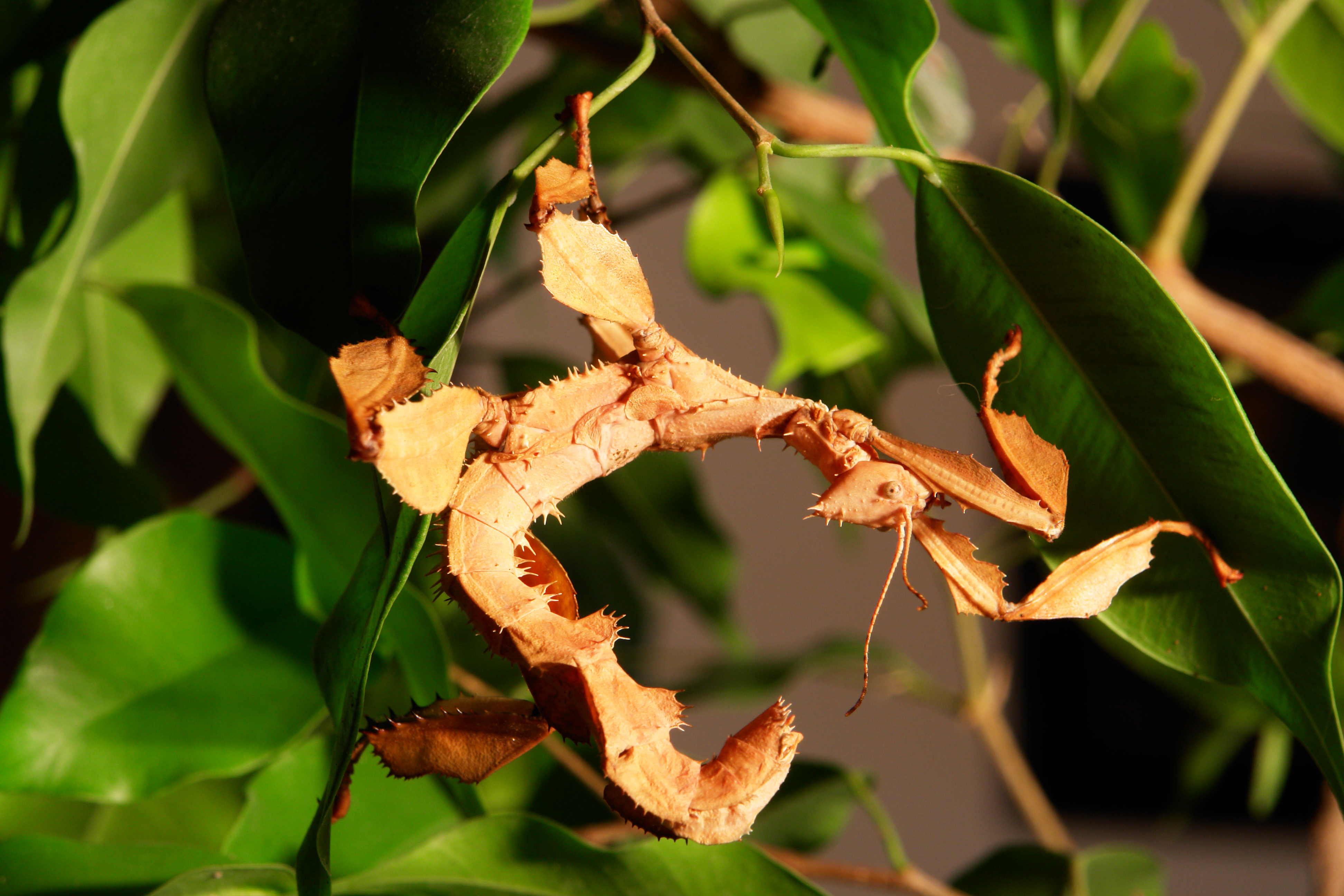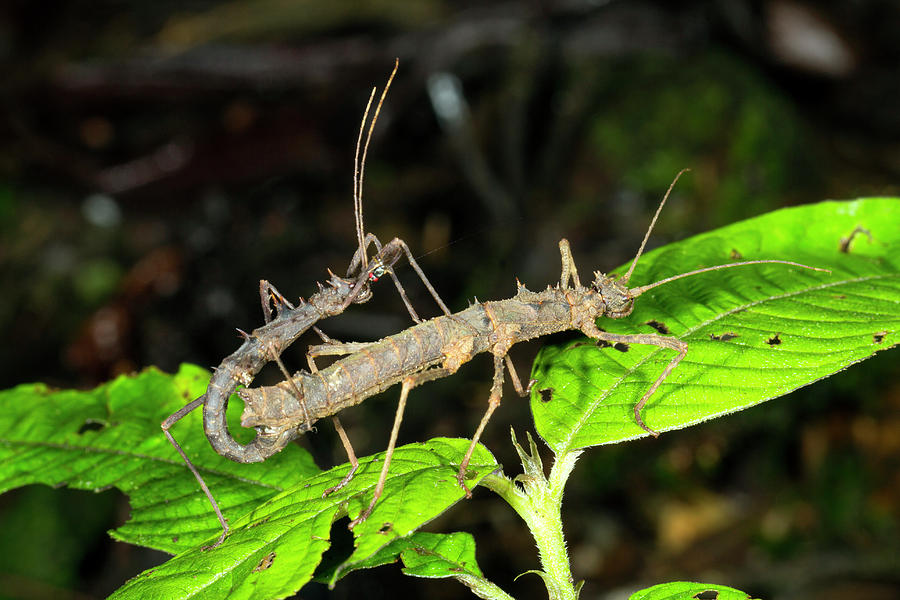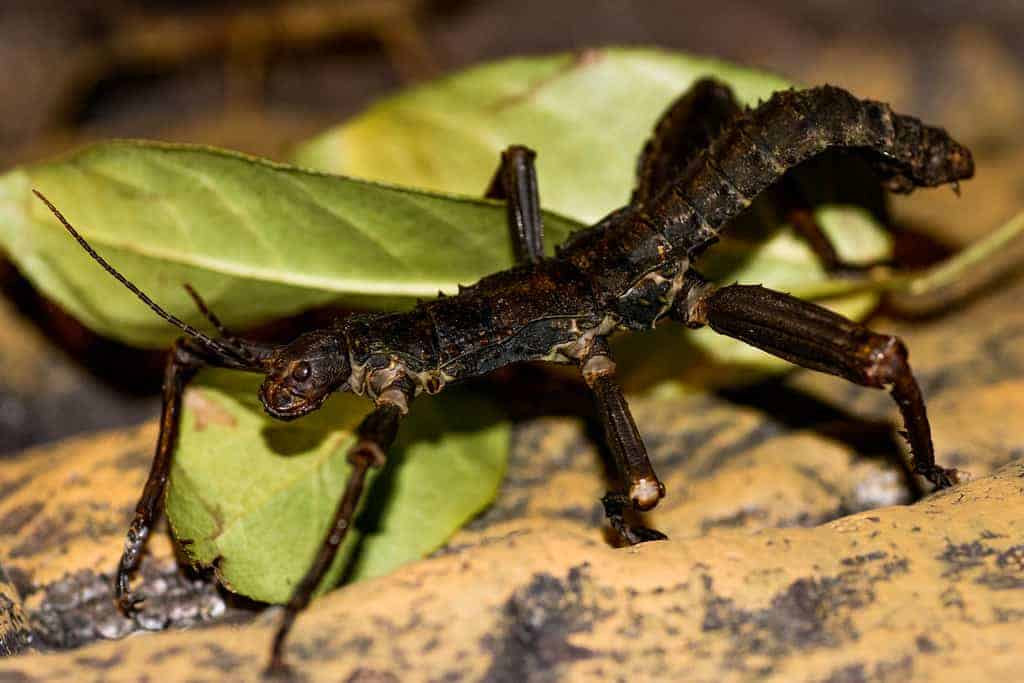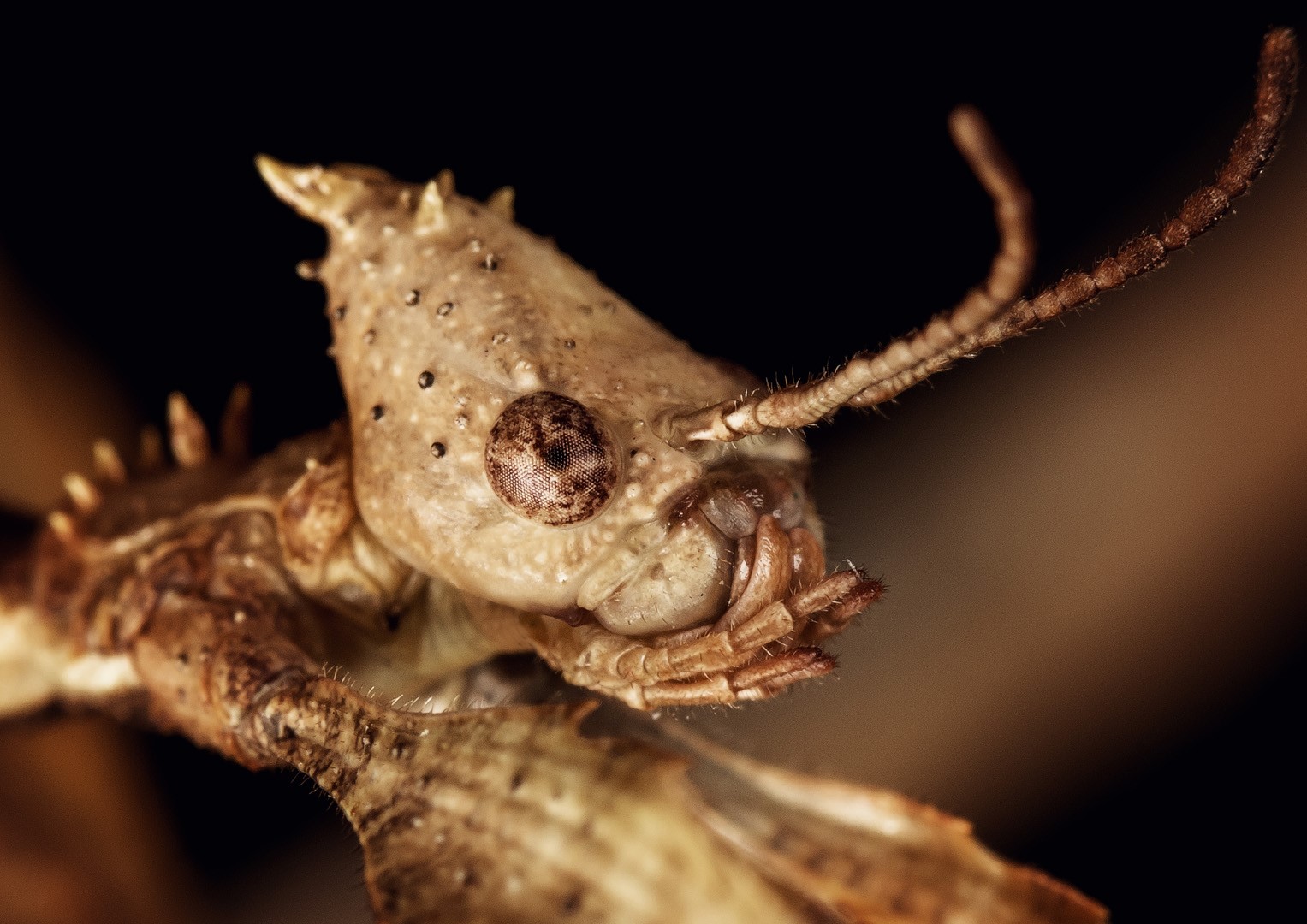
These spiny leaf stick insects are living in one of our trees. Qld, Australia r/Entomology
The Spiny Leaf Insect is a species of stick insect, also known as Spiny Stick Insects. They belong to a well-camouflaged group of insects called phasmids. Spiny Leaf Insects appear more like dead leaves than sticks. The Spiny Leaf Insect (Extatosoma tiaratum)

Animal Giant Spiny Stick Insect 4k Ultra HD Wallpaper
Originating from Australia, the Giant Prickly Stick Insect - also known as the spiny leaf insect - is a favorite among insect enthusiasts. Not to be confused with the Giant Spiny Stick Insect (Eurycantha calcarata) which is native to New Guinea and the Solomon Islands. Female members of this species can grow impressively up to 6.3 inches.

A Spiny Stick Insect uses its amazing leaflike limbs to blend into the surrounding. Amphibians
The Spiny Stick Insect is a phasmid native to Australia and New Guinea. Like most phasmids this species is very docile. This species will mimic a scorpion when threatened as a defence mechanism. The Spiny Stick Insect will curl their abdomen over to mimic a scorpion's tail and raising their front arms to mimic a scorpion's pincers.

Care of Stick Insects The Australian Museum
The Giant Spiny Stick Insect is a thoroughly impressive species of stick insect. Growing to some 15cm or so in length these are big, bulky creatures. Covered in sharp spines they are sometimes also known as the "Thorny Devil Stick Insect".

Giant Spiny Stick Insect (Eurycantha calcarata) Care Sheet Keeping Exotic Pets
Step 1: Things You Will Need 1: An enclosure of some sort- preferably a fly screen cage. If it is rectangular as most cages are, it should be placed vertically due to the insect's instinct to climb.

It's alive!!!! Spiny Stick Insect Extatosoma tiaratum … Flickr
Leaf and Stick Insects: Order Phasmatodea - The Australian Museum Receive the latest news on events, exhibitions, science research and special offers. Phasmids are insects that eat leaves and resemble leaves or sticks.

Spiny Stick Insects Mating Photograph by Dr Morley Read Pixels
The New Guinea Spiny Stick Insect, or more specifically Eurycantha calcarata, is a large species of ground dwelling stick insect from New Guinea. The Phasmid Study Group give it the species number psg 23.

Extatosoma_tiaratum_119.JPG (3888×2592) Stick insect, Insects, Insect photography
Stick insects cannot bite, sting, or otherwise harm you, but female spiny leaf insects have spines on their undersides and legs that they may brush against you if they are handled roughly. All stick insects are delicate creatures, and should be handled carefully in order to prevent them from getting hurt.

Spiny stick insect (Haaniella muelierii) Stick insect, Insects, Stick
Fiedel says that more common spiny leaf stick insects usually lay 500 to 800 eggs over their adult lifespan, but the museum's C. gargantua specimens have each laid perhaps a few dozen per week, though the number varies. The low output could be due to the conditions of captivity, or it could be a trait unique to the species itself..

Meet the Australian Spiny Stick Insect Explore Explore 7… Flickr
Extatosoma tiaratum, commonly known as the spiny leaf insect, the giant prickly stick insect, [2] Macleay's spectre, [3] or the Australian walking stick, is a large species of Australian stick insect. [4] [5] The species has the Phasmid Study Group number PSG9. [6] Range

Pin on Nature Life
The spiny leaf stick insect is a popular pet in Australia and is present in zoos around the globe. Despite this they face threats in the wild from wildfires and the introduction of ants. Read on to learn more about these incredibly invertebrates. Appearance What does the spiny leaf stick insect look like?

Spiny Stick Insect Photograph by Sinclair Stammers/science Photo Library
Eurycantha calcarata ( common names thorny devil stick insect [2] and giant spiny stick insect [3]) is a species of phasmid endemic to Australasia . Eurycantha calcarata is native to New Guinea, New Caledonia, and the Solomon Islands. Typical habitat includes warm humid rainforest where it is found in foliage and ground litter.

Stick Insect As A Pet? A Look At Different Types Of Stick Insects
The Spiny Leaf Insect ( Extatosoma tiaratum) is also known as Giant Prickly Stick Insect or Macleay's Spectre Stick Insect. The name may change, but their odd appearance stays the same. When laying her eggs, the female flicks the eggs from her abdomen down to the ground.

Spiny Stick Insects Tiaratum Crazy Crabs of Perth, Western Australia
Spiny head 'Green walking twig' Nymph. Stick insects belong to the insect order Phasmatodea. The names comes from the Greek word 'phasm', meaning phantom. Stick insects in New Zealand. New Zealand has about 20 species of stick insect.

Giant spiny stick insect Tilgate Nature Centre
Stick insects or phasmids eat leaves and resemble leaves or sticks. Stick insects or phasmids eat leaves and resemble leaves or sticks.. The eggs of the Spiny Leaf Insect, Extatosoma tiaratum, have a knob, called a capitulum, which is attractive to ants. Ants carry the eggs back to their underground nests, eat only the knob, and leave the.

Leaf and Stick Insects Order Phasmatodea The Australian Museum
Female Spiny Leaf Insect. Male Spiny Leaf Insect. Sexual dimorphism exists in this species as the males are petite. and thinner and grow only about 4.3 inches, while females are long, heavy-bodied, and grow to about 7.9 inches long. Females have thorn-like spikes all over their bodies which males mostly lack except for the ones on their faces.